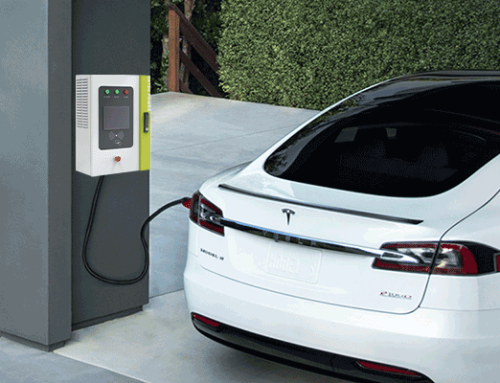As we stand on the brink of a significant shift towards medium- and heavy-duty electric vehicles, fleet owners must recognize that avoiding electrification is no longer an option. The transition to electric fleets, while potentially offering long-term savings and sustainability benefits, requires careful planning and strategic decision-making. Here are three crucial aspects to consider when contemplating the switch to an EV fleet.

Fleet Size and Type
The most critical planning will be in the early stages of your process where it is best to start with a feasibility study. This can help you determine which vehicles make the most sense to electrify first. With the broad range of options becoming increasingly available, you will need to determine if the electric vehicles currently or soon available on the market can perform the same duties as their current internal combustion engines (ICE) vehicles. Are they capable of hauling the same amount of load? Will the vehicle complete the same length of a route while running on a single charge? How and where will you charge? What is the total lifetime cost of ownership for each vehicle?
Some vehicle types may be better suited for early electrification than others. For example, vehicles such as last-mile delivery trucks have near-term availability and predictable routes and times, typically conducting operations during normal working hours. This not only means that they can be charged at night when electricity costs are lower, but also that they are staying close to the central areas where the energy source for fleet charging can be co-located. Long haul trucks operate significantly more miles per day, and therefore can deliver lower TCO over a shorter amortization period. However, EVs’ shorter driving ranges coupled with the need for ultra fast charging on the road at optimal locations and times all create greater barriers to electrification.
There’s also the question of opting for long-term planning and purchasing a larger amount of vehicles versus starting with smaller pilot projects using fewer vehicles. While it may initially seem better to start small, incremental approaches could cost more in the long term, as you can lose the efficiencies gained from deploying projects at scale. When deciding where and how to charge, operators will need to find the optimal configuration of vehicles to chargers, which will vary depending on location and site-specific conditions. Planning also depends on creating new alliances with service providers and potentially competitors to ensure that reliable, cost-effective, high-power charging emerges where it’s needed for your fleet when vehicles arrive at scale. Having confidence in your fleets’ charging requirements can lead to lower energy costs, ensuring it’s delivered only when and where it’s needed.
Maximizing Return on Investment (ROI)
The challenges of properly accounting for electric vehicles can arise as early as the purchase decision. Budget approvals often come with requirements to buy the “cheapest” vehicles, which can hinder accurate cost-benefit analysis of ICEs vs. EVs, since the initial purchase price of electric vehicles is often higher. Procurement leaders should not only evaluate the vehicle’s sticker price, but also take lifetime fuel costs (for the electricity used), insurance, maintenance, and repairs into account. In addition, operational efficiencies (and inefficiencies) need to be accounted for in TCO as different vehicles and features will carry positive or negative cost considerations.
Furthermore, the traditional accounting principles that incorporate refueling for gas and diesel fleets will not apply to these new vehicle classes because of the nature of electricity costs. Electricity is variable by time of day and changes due to utility regulatory dynamics; however, some or all of electricity costs can be fixed with the incorporation of low cost, long term renewable energy supply.
Accounting teams must consider the total cost of ownership (TCO) of vehicle operations to accurately determine the value of these assets. Factors like state, federal and utility incentives toward vehicles, charging infrastructure and low carbon fueling can heavily influence the net TCO in order for organizations to appropriately weigh the cost-to-benefit ratio.
Charging Infrastructure and Location
Arguably the biggest challenge to vehicle electrification is the charging infrastructure, including figuring out where and how it’s built and deployed, and who pays for it.
First, businesses will need to figure out how much power will be required for charging and what magnitude and mix of chargers are most appropriate for their fleet operations. The coming wave of medium- and heavy-duty electric vehicles will require Level 2 (L2) or DC fast (aka “Level 3”) charging technologies, each with unique installation requirements and power outputs. Currently SETEC POWER is able to provide up to 360kW level 3 EV charger. These chargers ensure efficient and safe charging for your heavy-duty vehicles, serving as a robust foundation for the growth of your business.
The magnitude and timing of power capacity available from the local utility and how fleets plan to use and charge their vehicles will impact where they need to be sited. Location plays a crucial role. In urban areas, the existing grid infrastructure may already be strained or insufficient. RMI notes that “cities and regions may need stronger substations, larger distribution transformers, and more feeders” in order to supply the growing demand – all of which cost time and money, and lie outside of the fleet owner’s control. In contrast, rural areas may lack available energy resources or access to transmission lines that can provide power to remote areas.
Additionally, fleets will have to consider electric rate plans, which are often varying based on time of day as well heavily affected by level of power used at a given time, called demand charges. Rates must be considered in terms of both the cost and logistical impacts to existing transportation operations.
Training and Skill Development
An often overlooked yet critical aspect of transitioning to an EV fleet is the need for comprehensive employee training and skill development. The shift to electric vehicles introduces new technologies and procedures that require a different set of skills and knowledge from your team.
For drivers, the operation of EVs differs significantly from traditional vehicles. They need to understand the nuances of EV driving, such as energy-efficient driving habits, charging procedures, and the impact of weather conditions on vehicle performance and range. This knowledge will enable them to maximize the efficiency and lifespan of the vehicles, contributing to the overall success of your fleet’s transition.
For fleet managers, face the challenge of managing the unique operational dynamics of an electric fleet. This includes scheduling charging to optimize costs and vehicle availability, tracking and managing energy usage, and planning routes considering the range of EVs.
Maintenance staff also face a learning curve with the new technologies introduced by EVs. They must become proficient in maintaining and repairing electric drivetrains, battery systems, and charging equipment. Additionally, they need to understand the safety procedures specific to EVs, as working with high-voltage systems can present unique risks.














